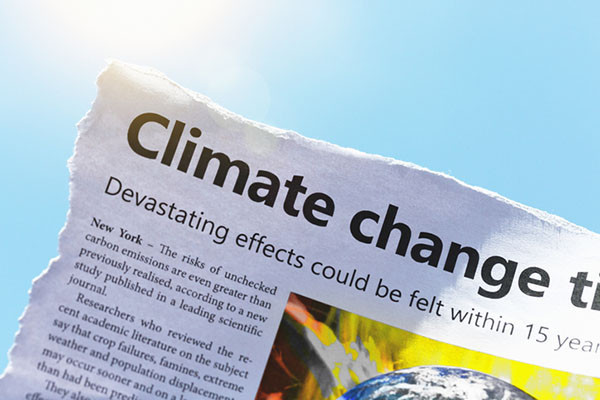A forest fire in northern California and a mile-long glacier breaking apart appear in your news feed. The stark reminders of climate change are constant, and may cause additional stress to your daily tasks. For example, in surveying your shopping cart filled with wipes, sandwich bags, and packets of baby food, you may question your choices, knowing that the plastic in those items will never break down completely. You may feel guilty about driving the short distance to the store, or you may struggle to stop worrying about how your actions will affect future generations.
What is climate anxiety?
Climate anxiety, or eco-anxiety, is distress related to worries about the effects of climate change. It is not a mental illness. Rather, it is anxiety rooted in uncertainty about the future and alerting us to the dangers of a changing climate. Climate change is a real threat, and therefore it’s normal to experience worry and fear about the consequences. Anxiety about the climate is often accompanied by feelings of grief, anger, guilt, and shame, which in turn can affect mood, behavior, and thinking.
How common is climate anxiety?
According to a survey by the American Psychological Association, more than two-thirds of Americans experience some climate anxiety. A study published by The Lancet found that 84% of children and young adults ages 16 to 25 are at least moderately worried about climate change, and 59% are very or extremely worried. This makes sense, as children and young adults will disproportionately suffer the consequences of environmental changes. A 2021 UNICEF report estimates that one billion children will be at “extremely high risk” as a result of climate change. Children and young adults are also particularly vulnerable to the effects of chronic stress, and climate anxiety may affect their risk of developing depression, anxiety, and substance use disorders.
How does climate change affect mental health?
In addition to existential worries and fears about the future, climate change can affect mental health directly (such as through natural disasters or heat) and indirectly (through displacement, migration, and food insecurity). Rising temperatures have been associated with increases in emergency department visits for psychiatric reasons, and may impair cognitive development in children and adolescents. Furthermore, food insecurity is associated with depression, anxiety, and behavioral problems.
How can you manage climate anxiety?
As uncertainty and a loss of control characterize climate anxiety, the best treatment is to take action. On an individual level, it’s therapeutic to share your worries and fears with trusted friends, a therapist, or by joining a support group. You can also make changes to your lifestyle consistent with your values. This may include deciding to take fewer flights, joining a protest, or increasing public awareness about climate change through advocacy. Joining an organization like The Good Grief Network can help you process feelings related to climate anxiety and connect with others to take meaningful action.
How can you help a younger person?
Climate anxiety disproportionately affects children and youth. To be an ally for a child, adolescent, or younger adult with climate anxiety, you can consider showing your support in the following ways:
- Validate their concerns. “I hear you, and it makes sense that you are worried (or angry) about this issue.”
- Help direct their efforts to advocacy groups. Spend time together researching organizations that they can get involved with.
- Educate yourselves on steps you both can take to minimize your impact on the environment.
- Support your loved one’s decisions to make changes to their lifestyle, especially changes they can witness at home.
- Spend time in nature with your family, or consider planting flowers or trees.
The bottom line
Climate anxiety is rife with uncertainty, but taking action may help you feel in control. Talk with others, join forces, and make lifestyle changes based on your values.
Article Credits: Harvard Health Publishing
